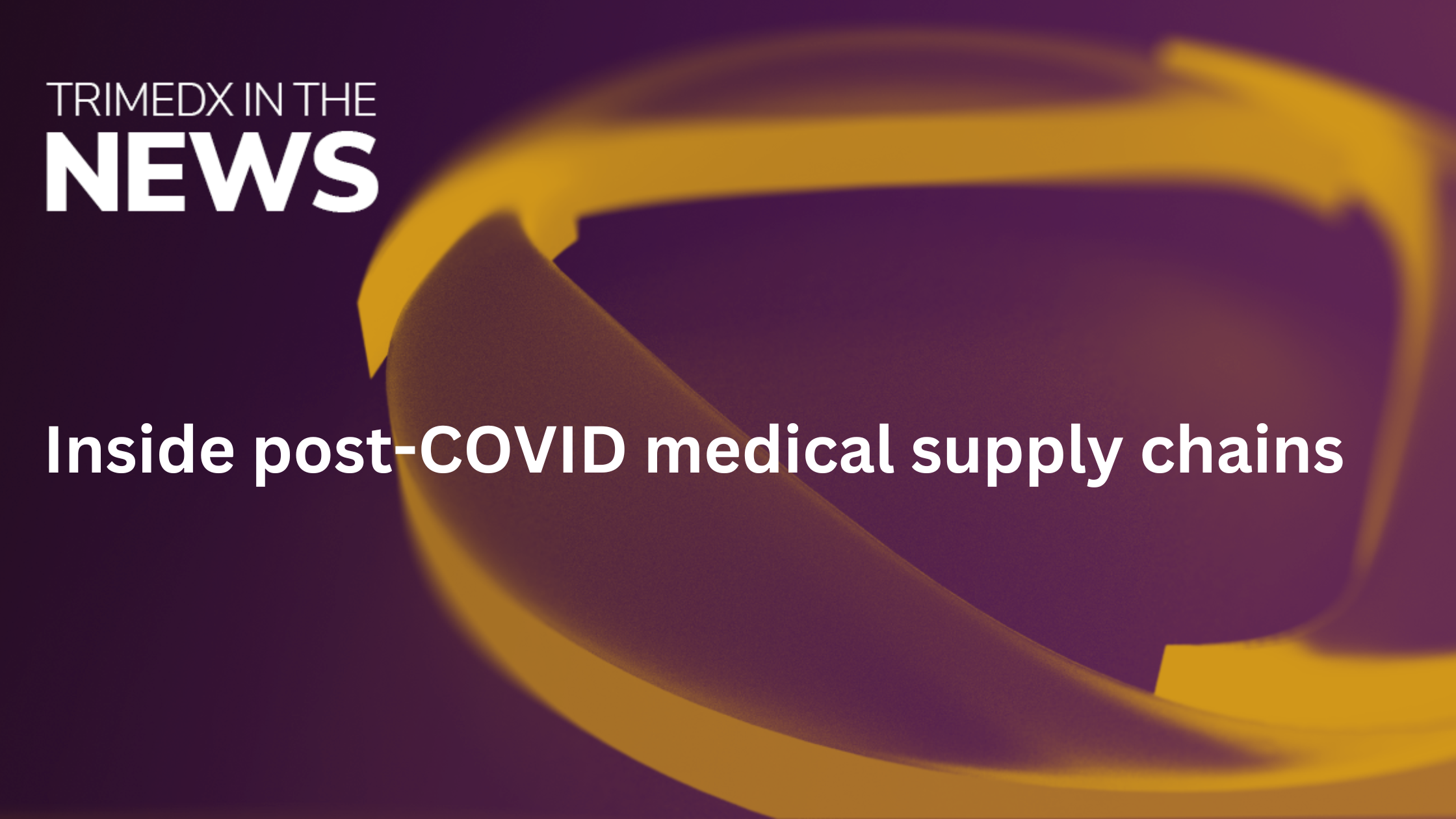TRIMEDX Senior Vice President of Supply Chain and Shared Services Kelley Jacobsen recently contributed an article in 24x7 Magazine on what steps healthcare systems can take to build a better process for their supply chain, including an in-depth understanding of their inventories and the ecosystem of suppliers that support them.
Why rising prices demand greater scrutiny and standardization
In the wake of the COVID-19 pandemic, medical device supply chains are among the top priorities for health system leaders. The global crisis revealed gaps in standard operating procedures for how the healthcare industry manages supply chains to keep medical devices functioning.
Amid supply chain disruptions during the pandemic, hospitals scrambled to find enough devices to keep up with unprecedented demand. Now, while many supply chain issues linger, health systems are also facing surging costs at a time when operating margins are tighter than ever.
To effectively address supply chain and inflation issues, health systems need a robust process, understanding their inventory and supplier network. Not only will this help them control costs, but it will provide predictability and minimize risk via quality assurance.
Understanding Your Medical Device Inventory
The first step in creating this process is to establish a comprehensive inventory of a health system’s equipment. Many hospitals don’t have an accurate account of what equipment they own. Without a deeper understanding and readily available data, TRIMEDX has found inventory inaccuracies within health systems can be as high as 40%. A comprehensive clinical asset management system will alleviate this and provide quality data, such as where a device is located, how often a device is used, and when it needs to be serviced or replaced.
Health systems with accurate data and analytics will be able to make better ordering and stocking decisions in advance, making them less reliant on disrupted supply chains and less exposed to rising costs.
Centralizing the Supply Chain
Many hospitals report they are still struggling to find supplies they need, with devices and equipment on backorder—some with as much as eight times more medical devices and supplies on backorder than in 2019, according to one report.
Working with a vendor that manages clinical assets and centralizes the supply chain can help address inflation and supply chain challenges. Established sourcing relationships, combined with a deep understanding of a health system’s inventory and utilization, will make supplies and devices more accessible—despite disruptions in the global supply chain or increasing costs.
For example, a health system that works with a partner who has consistent, contracted helium sources will fare better throughout the global helium shortage. A contracted helium source will be able to leverage their scale to lessen the exposure of a shortage. If a health system is sourcing helium on its own, without that trusted partner, it could be last on the list to receive helium necessary to run MRIs.
In the aftermath of the pandemic, many health system leaders have realized how essential it is to have an in-depth understanding of their inventory and their suppliers. Health systems working with well-sourced partners weren’t as heavily impacted by supply chain problems at the peak of the COVID-19 pandemic. While many hospitals struggled to find enough ventilators, those working with a partner who had relationships with multiple suppliers and extensive sourcing strategies were able to find ventilators when they needed them most.
Reducing Risk, Improving Patient Safety
Without a centralized supply chain team, hospitals sometimes rely on technicians to source devices or parts themselves. This can be especially challenging when prices are rising or supply chains break down.
Out of desperation, technicians grappling with this situation sometimes even resort to ordering parts on consumer websites or non-qualified suppliers. This presents a significant risk to health systems and their patients. Parts ordered through a consumer website may not have been inspected or validated properly. If the part does not function correctly, it could seriously impact patient care. This is why it’s critical to have an ISO-certified partner who has a rigorous supplier quality qualification process.
Improving Financial and Operational Efficiency
A comprehensive management process through an expert partner helps health systems improve financial and operational efficiency. In fact, a McKinsey & Company survey of 149 health system executives found that more than half did not have dedicated personnel to engage with front-line staff around supply chain issues.
Relying on a dedicated supply chain team, instead of adding sourcing responsibilities to a technicians’ workload, will allow them to focus on their expertise and deliver quality service to their clients. As prices continue to climb, a partner with scale and buying power will help health systems control costs and reduce risk. Further, a health system buying few devices or a technician purchasing used parts online may end up paying more over time.
Quality parts from a reputable vendor minimize equipment downtime. Faulty components might fail within weeks or months, whereas vetted parts can last for years. Without them, health systems risk frequent replacements and unplanned interruptions in patient care. A comprehensive management system, which predicts when a part will need replacement or service, is essential. Such proactive measures protect a health system’s investment in devices, deterring premature replacements.
A comprehensive management plan also guards against hidden costs. Not only do health systems frequently lack visibility into their inventory, but they are also often unaware of how they’re being charged by suppliers and outside vendors. Sometimes, hospitals will find they’re paying multiple vendors to service the same device. If clinical engineering and supply chain management teams are working in lockstep, this type of unnecessary expense can be avoided. In addition, a reliable partner can monitor price increases from vendors and seek alternative sources if necessary.
Preparation Is Key
If a health system takes a holistic approach to managing its assets, it will be better prepared for whatever supply chain or price challenges arise in the future. Relying on a dependable partner who has unique data and analytics, supply chain depth, and buying power will help protect a health system against the unexpected.
